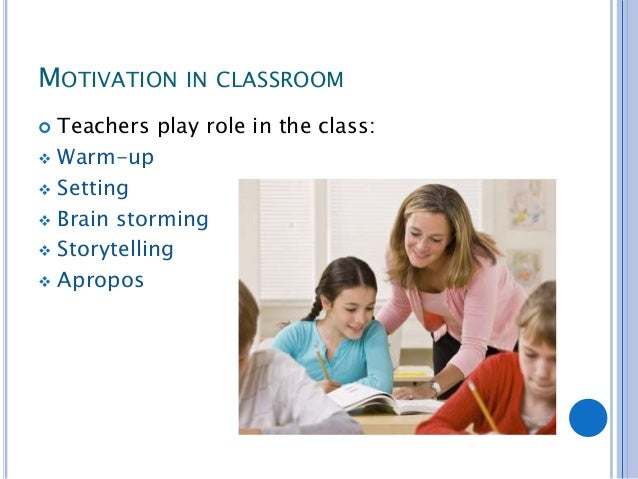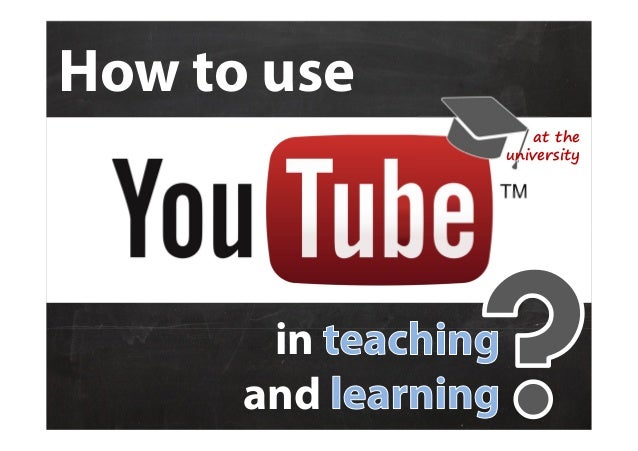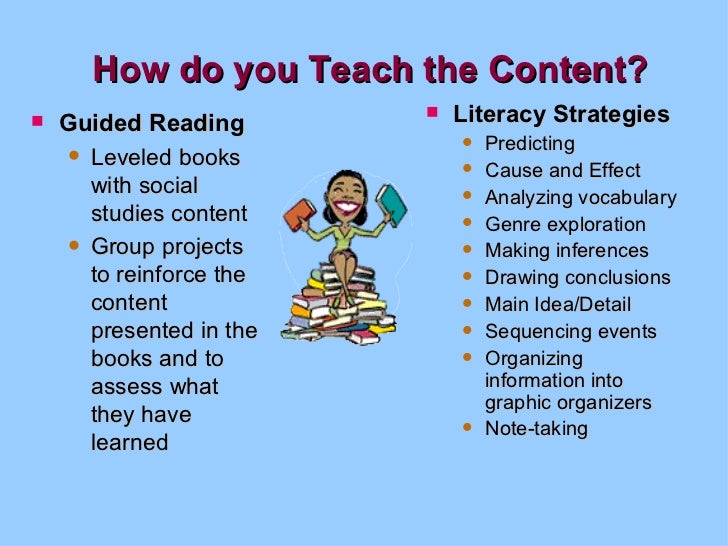Literacy is
an every-century skill
If you are a math, history, science, or art
teacher, where does literacy fit into your classroom instruction? It's common
to believe that literacy instruction is solely the charge of language arts
teachers, but, frankly, this just is not so.
Vaca et al. (2013) asserted
that "Adolescents entering the adult world in the
21st century will read and write more than at any other time in human history.
They will need advanced levels of literacy to perform their jobs, run their
households, act as citizens, and conduct their personal lives."
-- Richard Vaca, author
of Content Area Reading: Literacy and Learning Across the Curriculum
What is Content Area Reading? Content area reading is the reading that a
person (usually a student) needs to complete and understand in a particular
subject area.
Content Area Literacy
Gunning (2003) defined content literacy as "the ability to use reading and writing to acquire information in a subject area. Such ability includes the principal cognitive components: general literacy skills, content-specific skills (such as map reading in social studies), and prior knowledge of content (McKenna & Robinson, 1990). We are not equally literate in each content area."
Learner (2015) stated that in the past content-area literacy strategies were defined as a basic set of strategies students use when reading and respond to texts mostly in English subjects. Students may learn how to make inferences, ask questions, and summarize not only in English subjects but these strategies can also apply to reading science, history, and math.
Literacy Development
Literacy development is a process that begins before primary school. It starts from a child’s very early experiences and involves progression from learning to read and write to reading to learn and write. Therefore, literacy development is quite holistic since it is the foundation for almost all areas of a
child’s development. It is a cognitive, social, and psychological advancement, which develops in everyday activities. It not only bolster academic performance, but also creates proactive citizens who possess proficient reading, writing, and numerical competence. Whereas content area literacy focuses on a particular subject area, literacy development is synonymous with life skills.
How to Boost Literacy Development & Content Area Literacy
Foster Motivation and Engagement

Even teachers become demotivated and disengaged at times and so too do our students. Therefore it is vital that teachers motivate students. My best definition comes from the Oxford Dictionary of Business and Management (2016), which described motivation as mental processes that do 3 things: arouse, sustain, and direct human behaviour.
Teachers are managers and our job is to keep students engaged. Engagement means that our students are immersed in their work physically, cognitively, and emotionally. They can only be engaged if they are motivated. Therefore teachers must use the constructivist approach to keep them attentive and involved. If it means extrinsic motivation like praising and rewarding then that's the way to go. Intrinsic students are those who do not require that extrinsic stimuli because sometimes an A is just enough, but everyone is not the same. So we need to cater to our divers set of learners.
Other Strategies for fostering motivation and engagement (Gunning 2003)
- make connection between your subject and everyday life
- make goals specific and attainable (reachable) for all
- use hands-on activities
- monitor progress and encourage them
- praise and/or reward
Now explain to yourself (yes talk to yourself or a peer) why it is important to foster motivation and engagement.
How to Boost Literacy Development & Content Area Literacy
Foster Motivation and Engagement

Even teachers become demotivated and disengaged at times and so too do our students. Therefore it is vital that teachers motivate students. My best definition comes from the Oxford Dictionary of Business and Management (2016), which described motivation as mental processes that do 3 things: arouse, sustain, and direct human behaviour.
Other Strategies for fostering motivation and engagement (Gunning 2003)
- make connection between your subject and everyday life
- make goals specific and attainable (reachable) for all
- use hands-on activities
- monitor progress and encourage them
- praise and/or reward
Now explain to yourself (yes talk to yourself or a peer) why it is important to foster motivation and engagement.
Scaffold
Learning is fostered when students have a sense of being part of a supportive learning community (Gunning, 2003).
Cooperative Learning Groups

Gunning (2003) said teachers can scaffold students via cooperative learning groups. Students organize and test out their learning when they present their ideas and views. They listen to others, seek clarification, add their own understanding and learn to view ideas from multiple perspectives.
Integrate Technology

Gunning (2003) said teachers can scaffold students via cooperative learning groups. Students organize and test out their learning when they present their ideas and views. They listen to others, seek clarification, add their own understanding and learn to view ideas from multiple perspectives.
Integrate Technology

Rather than you tell or show students how to make macaroni cheese, a model of a house or slave plantation, or even do a back stitch you can let them watch the procedure on YouTube. You can always show it repeatedly until they can complete the task. Technology makes teaching and learning much more interesting than the the traditional approach. You can use technology in a social studies class to show students the catastrophic effects of natural disasters or show a video clip on the Morant Bay Rebellion in Jamaica.
Consistent and Timely Feedback
One of my college professors used to underline my entire assignments as he read them, then write a “B” at the top of the papers–with no explanation. As you can imagine, this information was meaningless to me, and gave me no opportunity for growth. Frequent and thoughtful feedback will increase the intrinsic motivation to learn in students as they realize their hard work has value and their instructor is genuinely interested in providing support (Eichholz, 2018).
Give opportunities to write and reflect on those goals. Goals are meaningless if you don’t regularly track your progress and think about what can help you to achieve them. Use journals or reflection sheets weekly to encourage students to consider the actions they’ve taken toward accomplishing their goals.
K-W-L Strategy
K-W-L (Ogle, 1986) is an instructional reading strategy that is used to guide students through a text. Students begin by brainstorming everything they Know about a topic. This information is recorded in the K column of a K-W-L chart. Students then generate a list of questions about what they Want to Know about the topic. These questions are listed in the W column of the chart. During or after reading, students answer the questions that are in the W column. This new information that they have Learned is recorded in the L column of the K-W-L chart.
The K-W-L strategy serves several purposes:
- Elicits students’ prior knowledge of the topic of the text.
- Helps bolster the six language art skills
- Connects reading to writing
- Sets a purpose for reading
- Helps students to monitor their comprehension
- Listening: understanding spoken language
- Speaking: communicating ideas through oral language
- Reading: understanding written language
- Writing: communicating through written language
- Viewing: understanding visual images and connecting them to accompanying spoken or written words
- Visually Representing: presenting information through images, either alone or along with spoken or written words
Reading and writing are interrelated and develop concurrently.
Isolated skill instruction is rarely developmentally appropriate.
What did Chall recommend teachers do at each level?
How do Chall's stages link reading to writing?
Consider the problems with reading and writing in our Caribbean education system.
Are teachers teaching students how to read and write in their content areas?
See comments below and answer questions.

Scenario Question
ReplyDeleteTeachers at J. T. Ambrose Primary School and Antigua Girls High School realize that a significant number of students are poor writers. They have asked you for a proposal to improve writing skills in the primary and secondary schools. Your proposal must include a brief explanation of:
a) four benefits of reading and writing (8 marks)
b) three mistakes teachers make in the classroom with reading and writing (6 marks)
c) four strategies to develop writing skills. (8 marks)
This is a very informative breakdown of Chall's Stages. I love how you linked reading and writing skills to content area literacy. Do you have suggestions for improving Stage 3 readers who struggle with comprehension
ReplyDeleteMezzanine floor delhi
Mobile Compactor delhi
Thank you for explaining Chall's Stages so clearly! It really helps me understand how students progress in literacy. Do you recommend any tools or activities for educators to support Stage 2 learners
ReplyDeleteHeavy Duty Rack india
Industrial storage rack india
"How can teachers effectively integrate both reading and writing strategies for Stage 4 learners who are preparing for advanced coursework
ReplyDeleteRacking system india
Warehouse Mezzanine Floor india
The way you connect Chall's Stages to content area literacy is brilliant. How can this framework be used to address literacy gaps in a middle school setting
ReplyDeleteSpare part storage rack india
Pallet Rack
"I’ve seen many high school students struggle with Stage 5 literacy. Do you have tips for scaffolding reading and writing tasks for older students
ReplyDeletelong span rack india
Fabric Roll rack noida
This post reminds me of some excellent strategies in the book Content Area Reading. Have you explored integrating digital tools to address different stages of literacy
ReplyDeletewarehouse racking system noida
Warehouse Pallet Racking System noida
"Could you explain further how Stage 1 learners transition to Stage 2 in writing skills? I’m curious about the role of phonics and vocabulary
ReplyDeletelong span rack noida
Mezzanine floor lucknow
I appreciate how you highlight the importance of content literacy across subjects. It's often overlooked in favor of general reading strategies."
ReplyDeletePallet storage rack lucknow
Spare part storage rack lucknow